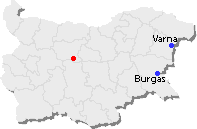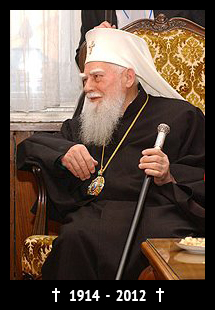
The Monastery is situated on the left bank of Cherni Osum River in the Troyan part of the Balkan mountains, at the footage of the forest hills Chukarka and 6 km from the Bulgarian town of Troyan.
The Troyan monastery “The Assuption of Holy Mother” is the third big monastery in Bulgaria. Legends say, it was found in 1600 by a hermit, who established here a little chapel few years after the Second Bulgarian kingdom fell under Ottoman domination in XIV C.
In XVI and XVII C. and even up to the beginning of the XIX C. the Monastery was repeatedly burnt down and the monks were slaughtered, just as were all other religious centers.
In 1830 a group of monks visited Constantinople (Istanbul) where they presented inquiry for clerical, administrative and economical independence of the Monastery. The monks achieved their aim with the help of a letter from the Turnovo Bishop – Ilarion. A special diploma issued on the 4th of December 1830 and signed by the ecumenical Patriarch Costandii proclaimed the Monastery as “stavropigial” – subservient directly to the Constantinople Patriarch.
The construction of a new church and residential premises began. The Monastery grew as an educational and cultural center. In 1869 a primary cell school has been opened, where eminent leaders of the National Revival received their education.
The Monastery was built in the spirit of the Bulgarian Renaissance. The wood carvings and the frescoes are impressive. The wall paintings from 1847 are part of Zachary Zograf’s art, who decorated the portraits of the Ctitors, the Abbot of the monastery, the Bulgarian saints and National independence heroes. Main part of the icons was painted by masters from the Samokov School. One of them was the brother of Zachary – Dimitar Zograf.
The carved iconostasis of the church, made of walnut tree, crafted in 1838 by the Tryavna masters is unique. The most famous miraculous icon of “St. God Mother – the threehanded” is kept in the monastery church. Legends say, it was a gift from a monk who spent few days with the hermit on his way from the Athon monastery to northern Balkans.
Together with its religious role the Monastery created also great Bulgarian writers, teachers and translators.
The Monastery was closely related to the National independence movement against the Ottoman occupation.

The secret monastery committee consisted of 80 monks whose leader was Archimandrite Makariy. During that time (middle of XIX C.) the bookmaking declined and the monks were busy collecting weapons instead of writing.
During the Russian-Turkish War for liberation Bishop Makariy turned the Monastery into a hospital to cure the Russian solders and offer help for the Russian army.
The Troyan monastery is a sacred place one of which novice was His Holliness Maxim – The Patriarch of Bulgaria and Bishop of Sofia.













